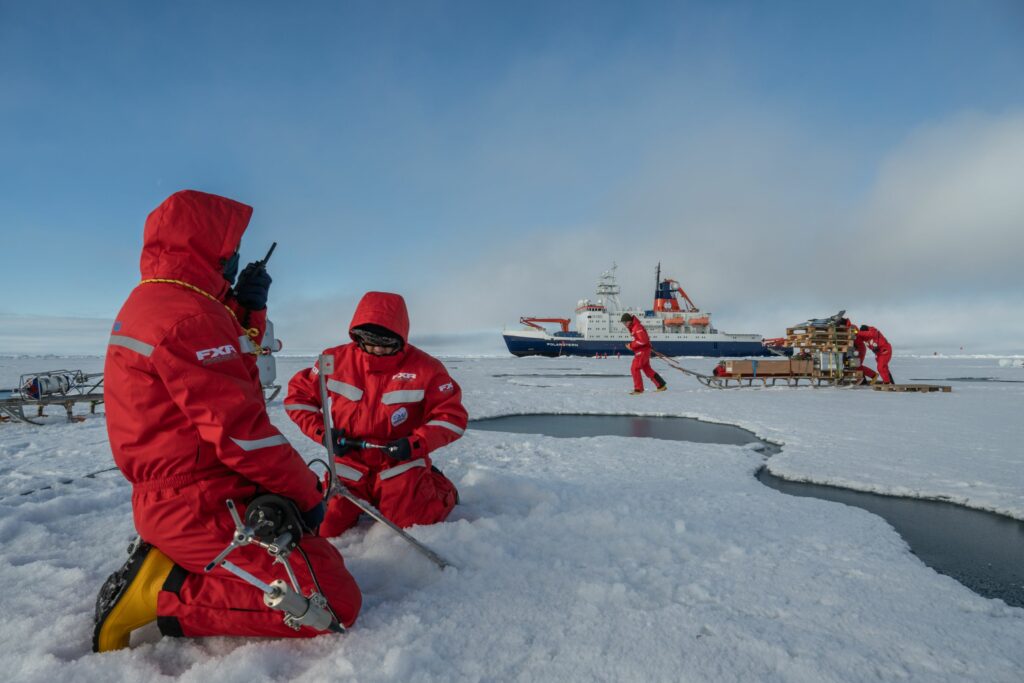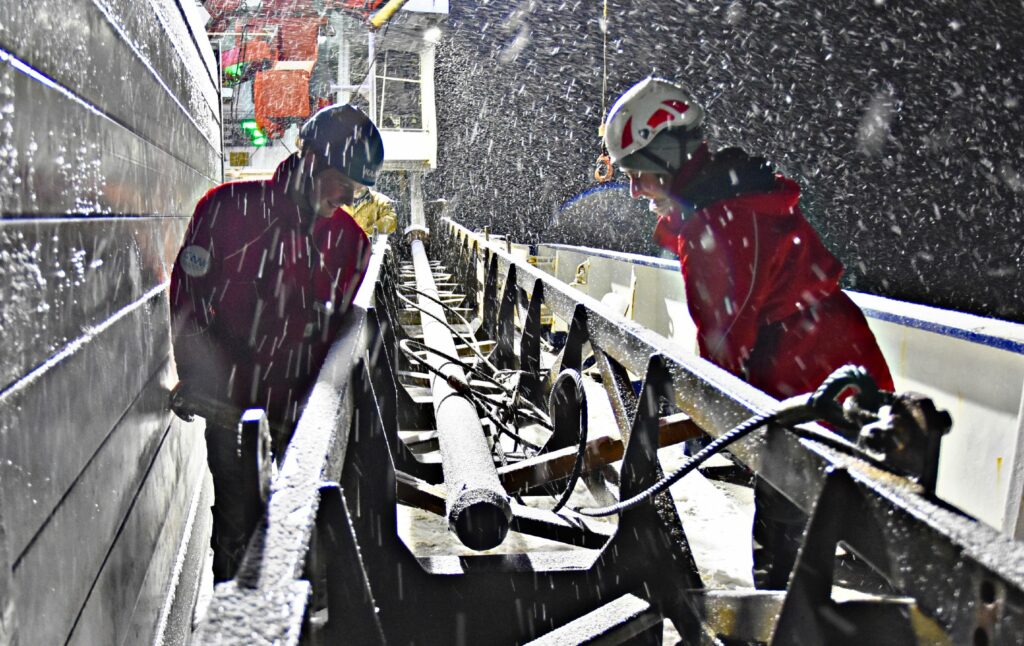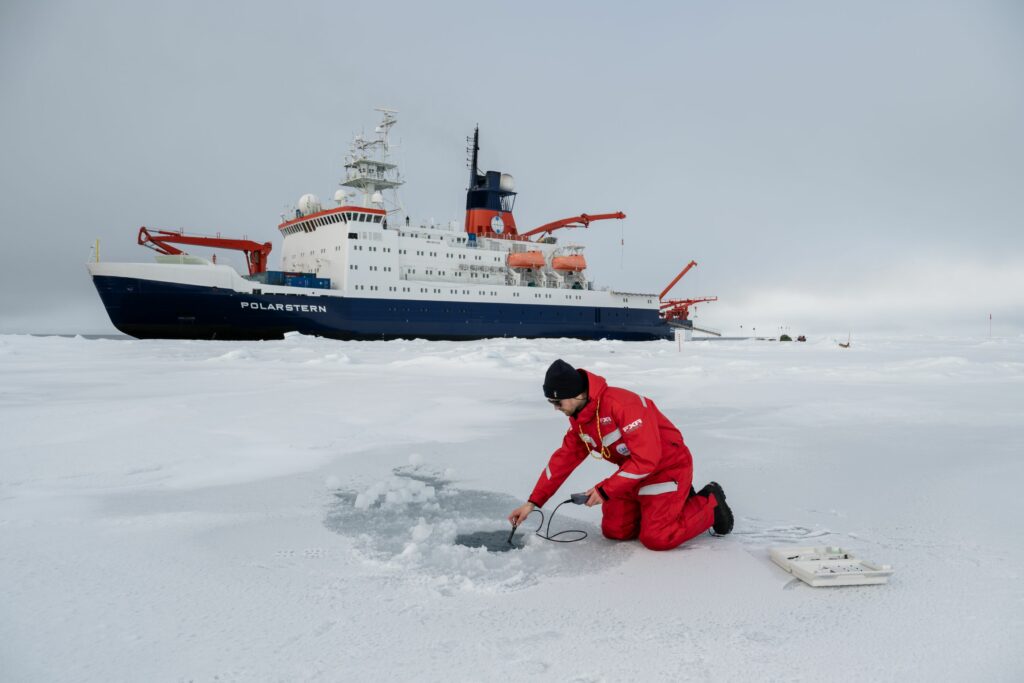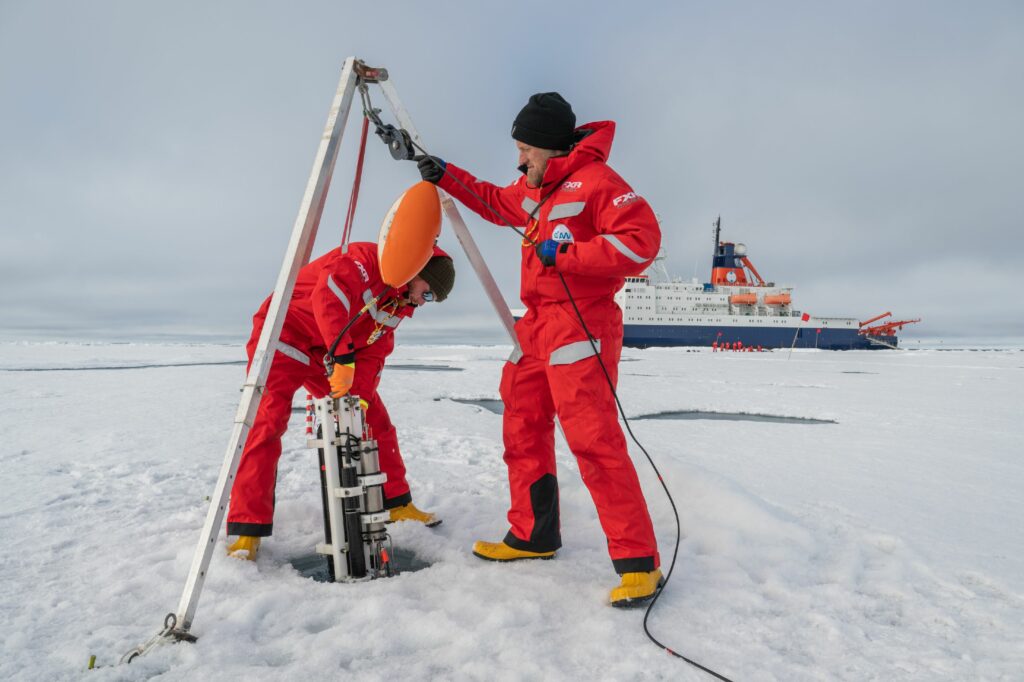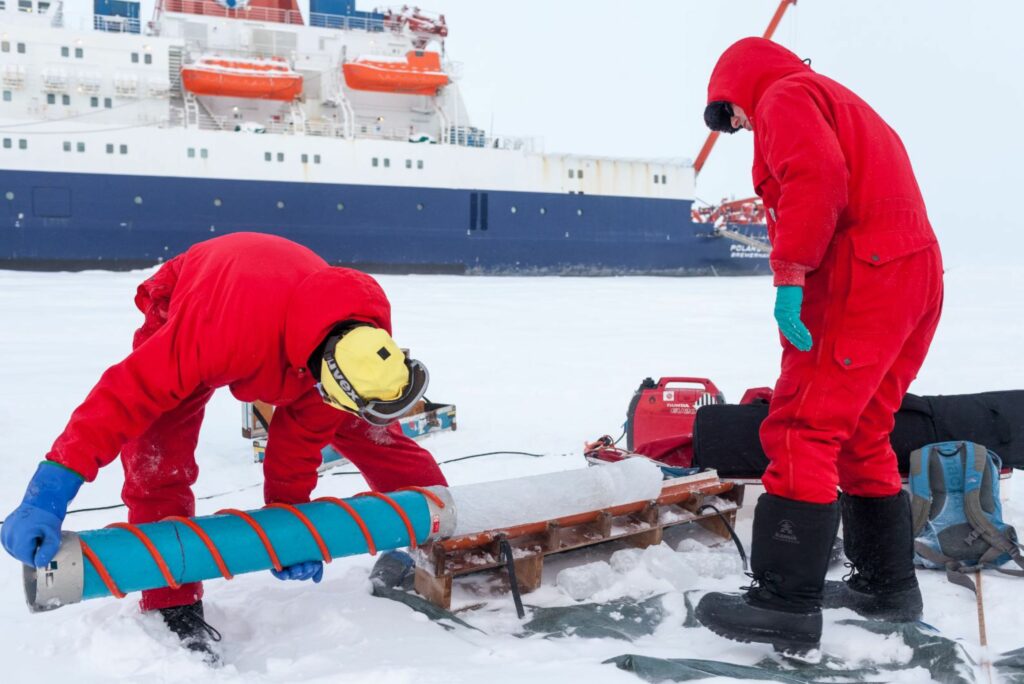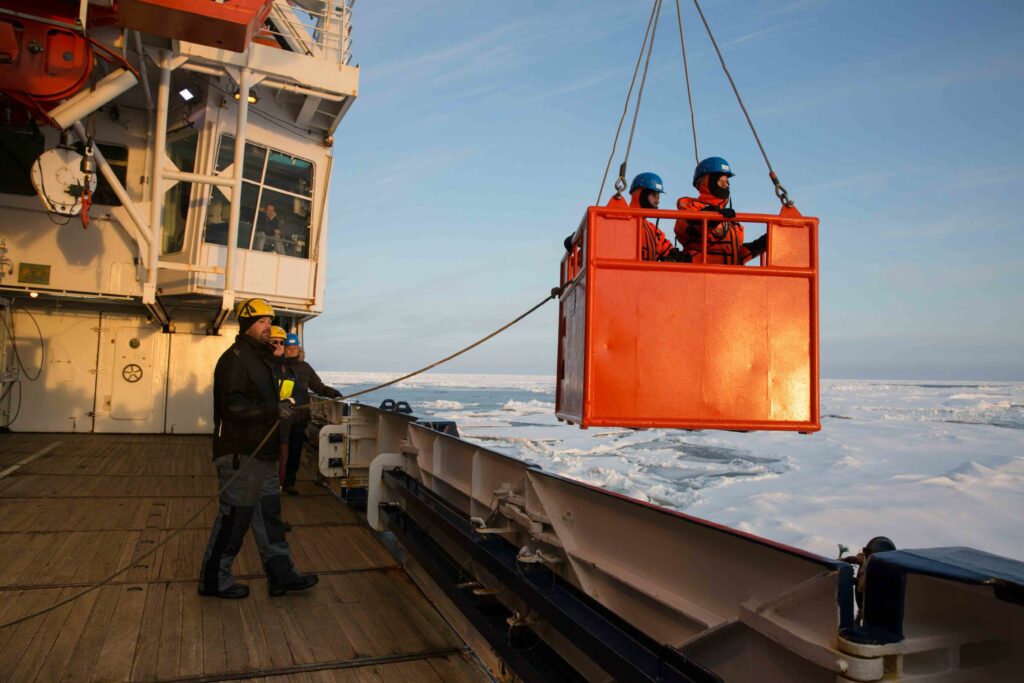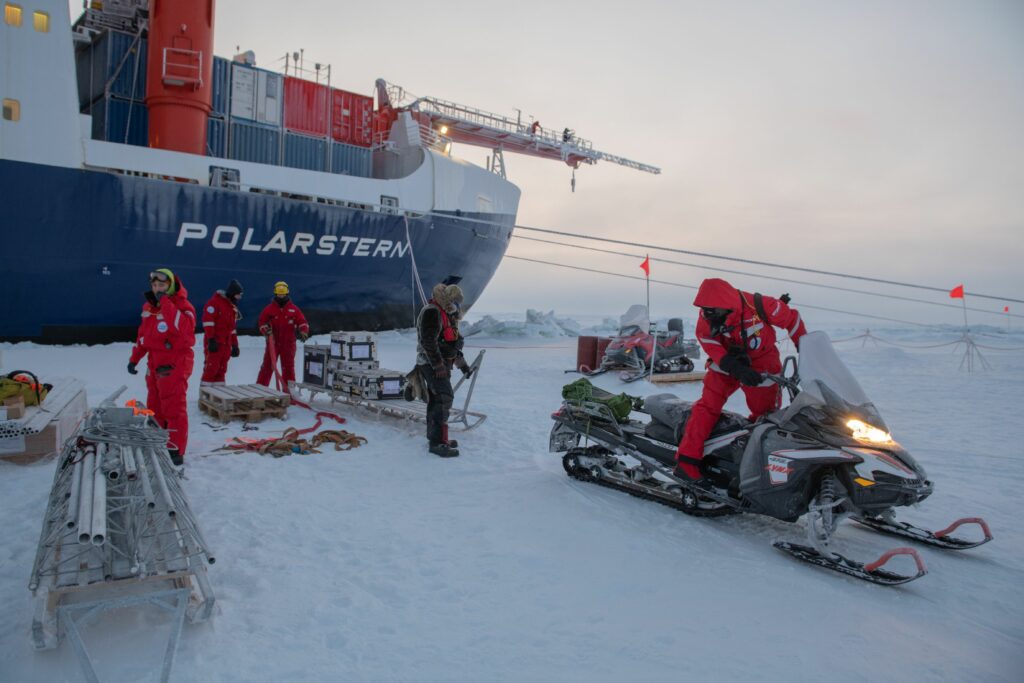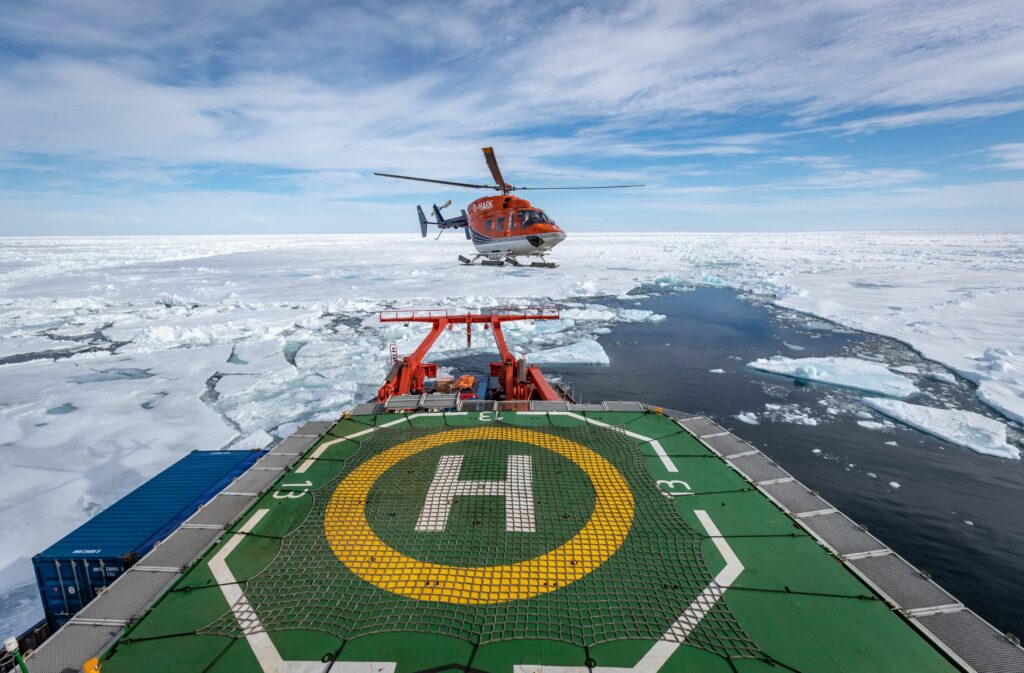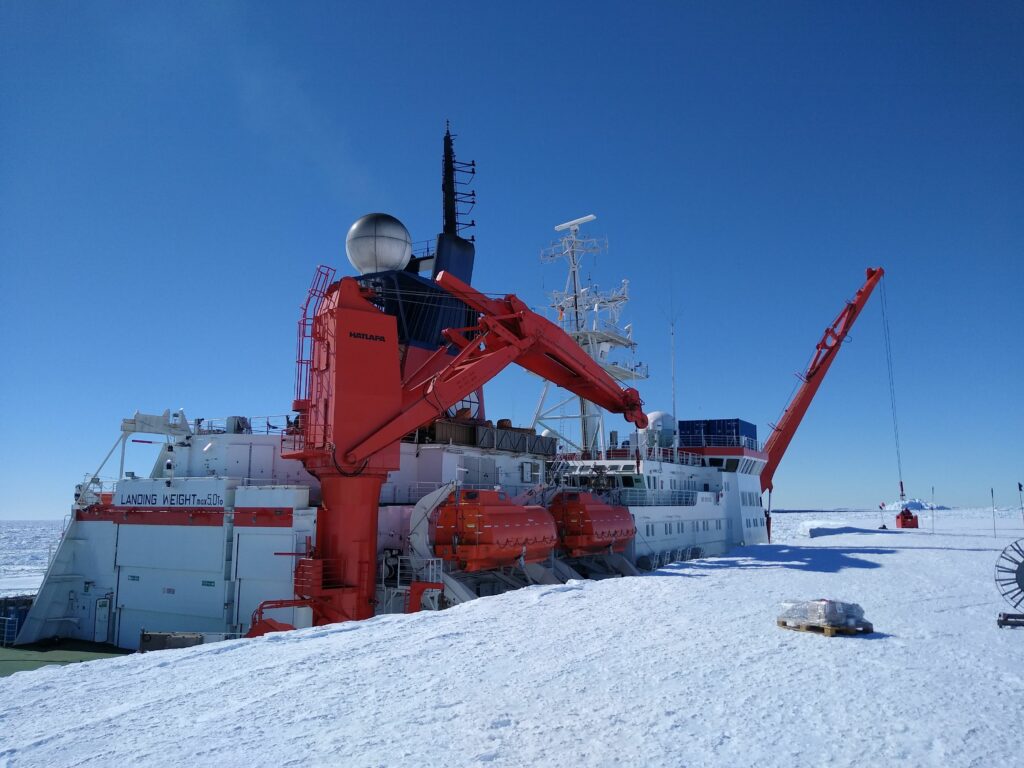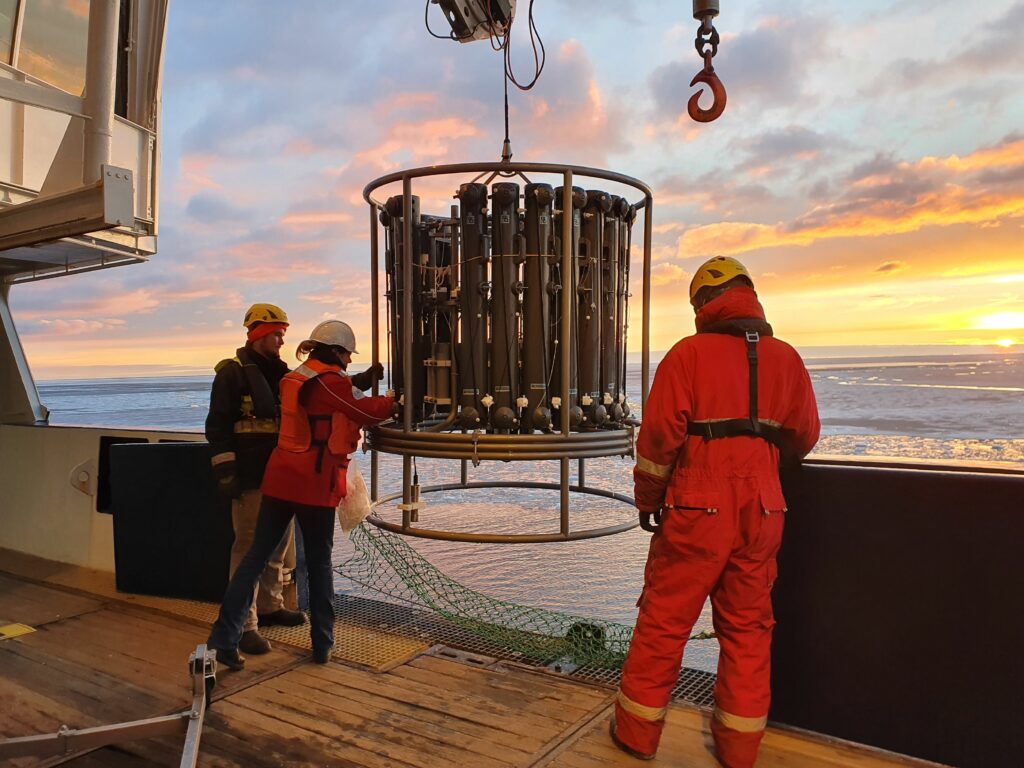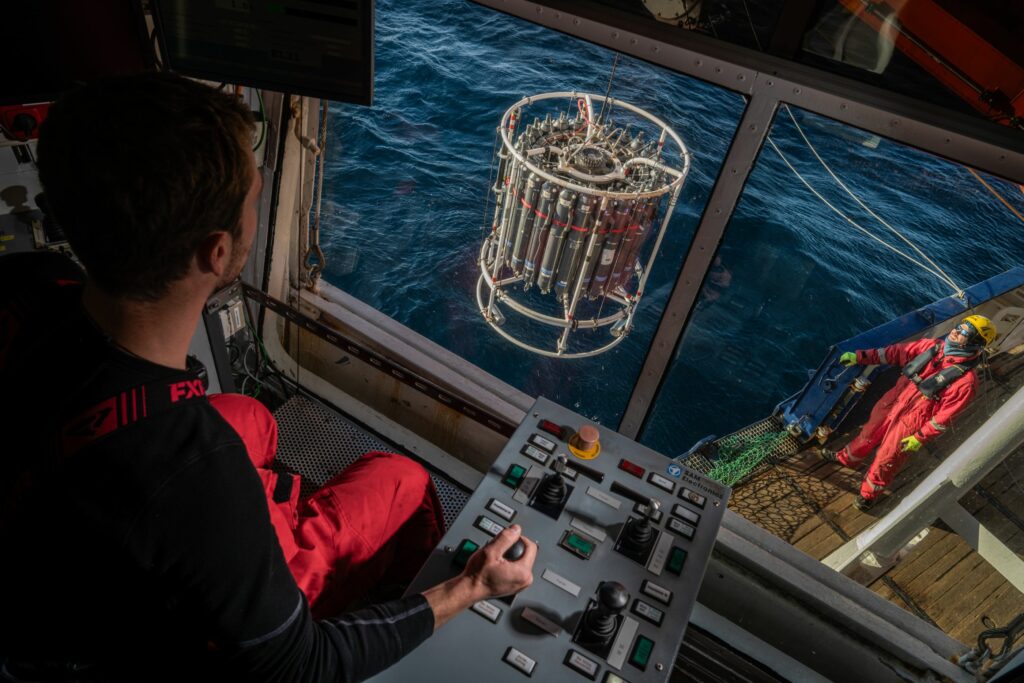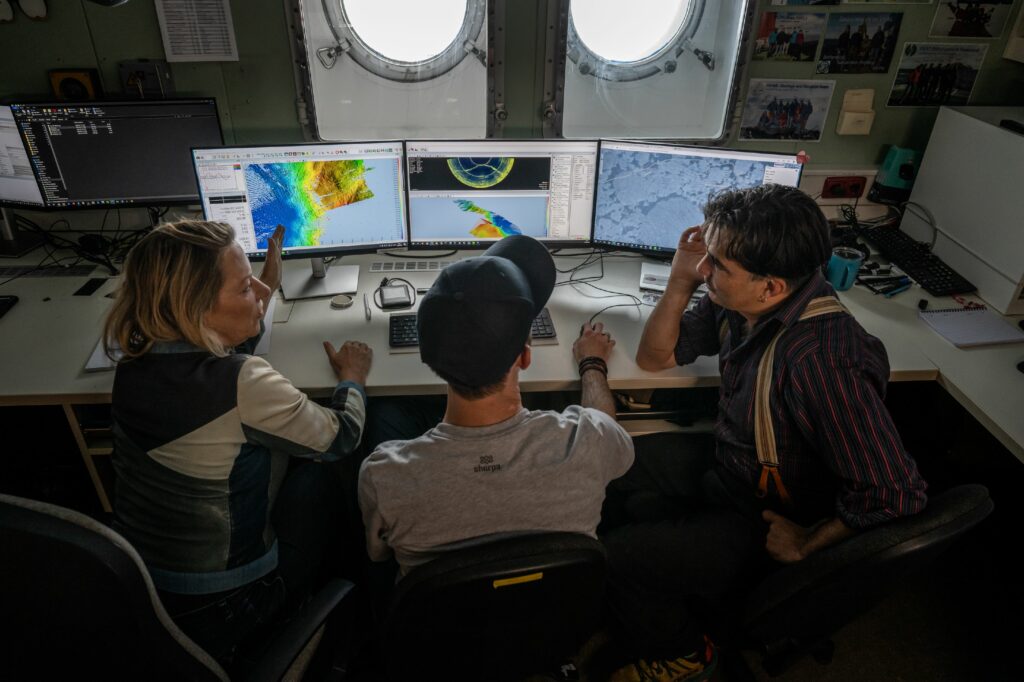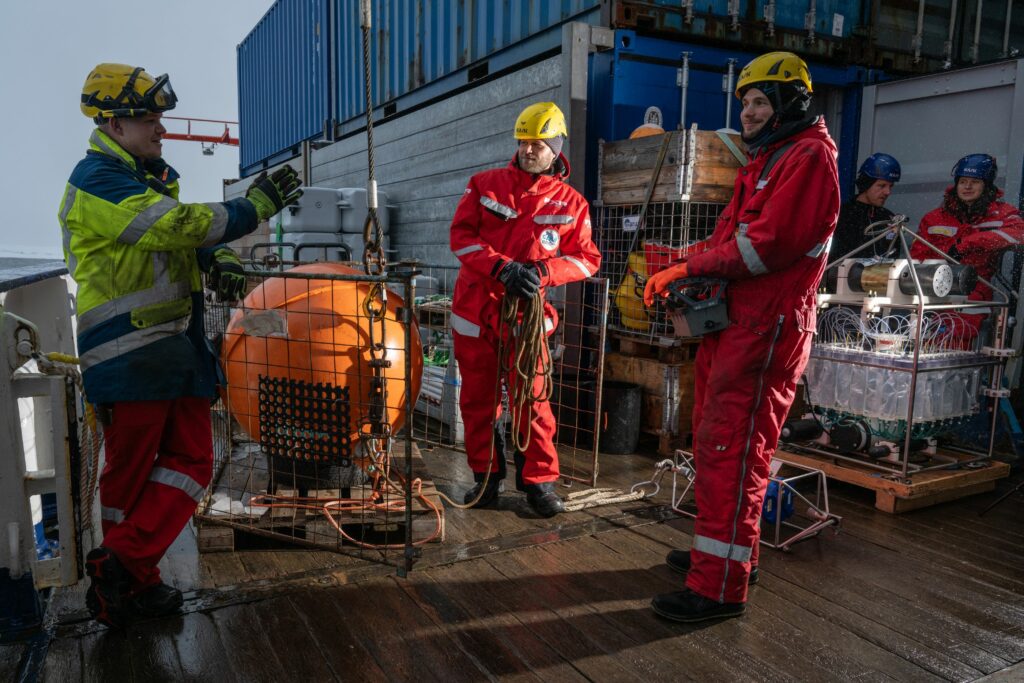The new ship
Frigid temperatures, dense sea ice, and beneath you, oceans thousands of metres deep and teeming with life, and lower still, a seafloor that holds information on the geological history of our planet: that’s where the new icebreaker will be underway. As one of the world’s foremost research platforms and the flagship of German climate research, the Polarstern is the gateway to the Arctic and Antarctic.
Flexible research platform
The ship is home to all marine sciences: from geology and geophysics to biology, oceanography, sea-ice and atmospheric research. Here, up to 90 scientific expedition participants and 50 crewmembers can find accommodation. The new Polarstern will offer them a safe haven for investigating Earth’s fascinating polar regions and will be equipped with a range of laboratories and fixed systems, from multibeam echosounders to sensors for meteorological observations, to digital infrastructure. Armed with this equipment and resources, the new Polarstern, just as her predecessor, will be able to operate year-round in the Arctic and Antarctic and gather data on those regions of our planet hardest-hit by climate change. After all, what happens in the polar regions affects us all: global ocean currents are changing, along with atmospheric circulation patterns, which affect the weather around the globe. The oceans offer a vital food source and carbon dioxide sink, room for rest and recreation, valuable minerals and natural resources, and open global transport routes. These services are now in jeopardy. The new Polarstern will give researchers from around the world the opportunity to gain critical insights into the progressing climate change our planet is experiencing, especially in the polar regions. Society urgently needs this type of knowledge so as to make the right choices regarding climate protection, environmental protection and nature conservation – for the future of the polar regions, for biodiversity on land and at sea, and for the generations to follow.
